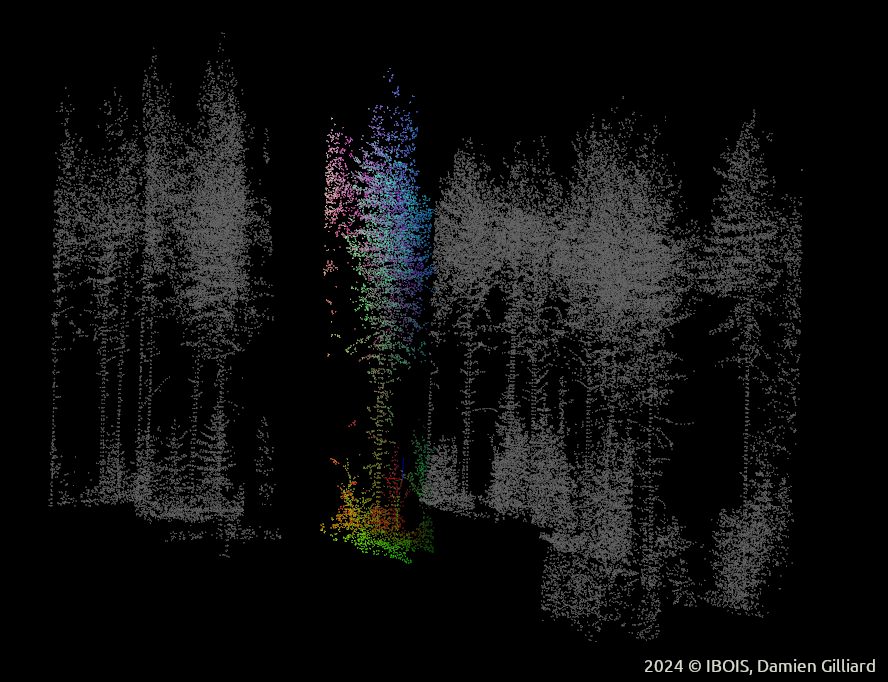RESEARCH DATA
Funding: Mainwodd
Status: Ongoing since 05.2023
PhD Candidate: Damien Gilliard, engineer-architect, uGent
Thesis director: Prof. Yves Weinand, architect and engineer, IBOIS
ABSTRACT
As the construction sector shifts towards more bio-based materials, the question of the material availability becomes more urgent. Habits that were developed with steel and concrete construction cannot be sustained by “replacing” them with timber and other bio-based materials. We need to reduce our material consumption, and when new materials are needed, we must source them as responsibly a possible. For the timber industry in particular, in order to limit the risk of over-exploitation of our forests, the wood produced by the trees during growth must be used as efficiently as possible, which can be done with round wood construction. But round wood has challenges of its own, mainly irregularity.
We therefore develop a tool that enables architects and engineers to design in round wood with specific trees from a given forest in function of the biotope’s diversity and dynamics.
More specifically, we establish an object-oriented database of individual tree instances that are “digital twins” equipped with properties (similar to metadata) and methods. Coupled with a set of forest management rules, an application queries through the database to find the most suitable trees for a given architectural design. The forest management rules are derived from individual-based forest gap models developed in life science. The database relies on serialization derived from mobile and video-game development.
This object-oriented approach enables the database to follow the growth of individual trees and include the time factor in the database, taking into account time-dependent factors and phenomenons while keeping one instance of each tree. Other applications are associated to the database, enabling to compute larger scale statistical analysis or maps on the basis of the database, linking back to life science and forest modelling.
This database is linked to Rhino, from which the architects and engineers can interact with the trees.
